Overview
The article delineates five effective steps to enhance title clearance times, emphasizing the optimization of the title search process, the utilization of advanced technology, and the assurance of compliance and accuracy.
By implementing standardized processes and leveraging tools such as Optical Character Recognition and machine learning, real estate professionals can address common challenges.
Consequently, these actions can significantly enhance efficiency and reduce delays in property transactions.
Introduction
Navigating the complexities of property transactions can indeed be daunting, particularly when it comes to title clearance—a vital process that guarantees a property deed is devoid of defects and encumbrances. Understanding the intricacies of title clearance not only safeguards buyers and lenders but also streamlines the entire real estate transaction. However, the path to efficient title clearance is frequently obstructed by:
- Incomplete records
- Legal discrepancies
- Outdated methodologies
Consequently, how can real estate professionals effectively overcome these challenges and significantly reduce clearance times?
Understand Title Clearance Fundamentals
represents a crucial procedure in verifying that a property deed is devoid of defects, liens, or other encumbrances that could obstruct its transfer. The key components of this process are as follows:
- Title Search: This entails a meticulous examination of public records to confirm the property's ownership history. A well-executed can reveal potential issues that may impact the transaction, thereby ensuring a smoother transfer process. Statistics indicate that a comprehensive property search significantly minimizes the risk of post-transaction conflicts, underscoring its importance in .
- : This policy serves as a safeguard against . It is an essential tool for protecting both buyers and lenders, providing peace of mind during property transactions.
- Legal Compliance: Adhering to all . This includes ensuring that all documentation is accurate and that any necessary disclosures are made. Moreover, it is essential to consider potential administrative and personnel costs associated with research, which can affect overall efficiency.
Understanding these fundamentals is vital for as they navigate the complexities of property transactions. As industry specialists assert, 'A thorough search of the document is not merely a formality; it is a fundamental step that can conserve time and resources in the long term.' By prioritizing these elements, professionals can discover how to while enhancing their efficiency and effectiveness in document clearance. Furthermore, can significantly improve the examination workflow, which is essential for understanding how to improve title clearance times, enabling swifter and more precise outcomes.
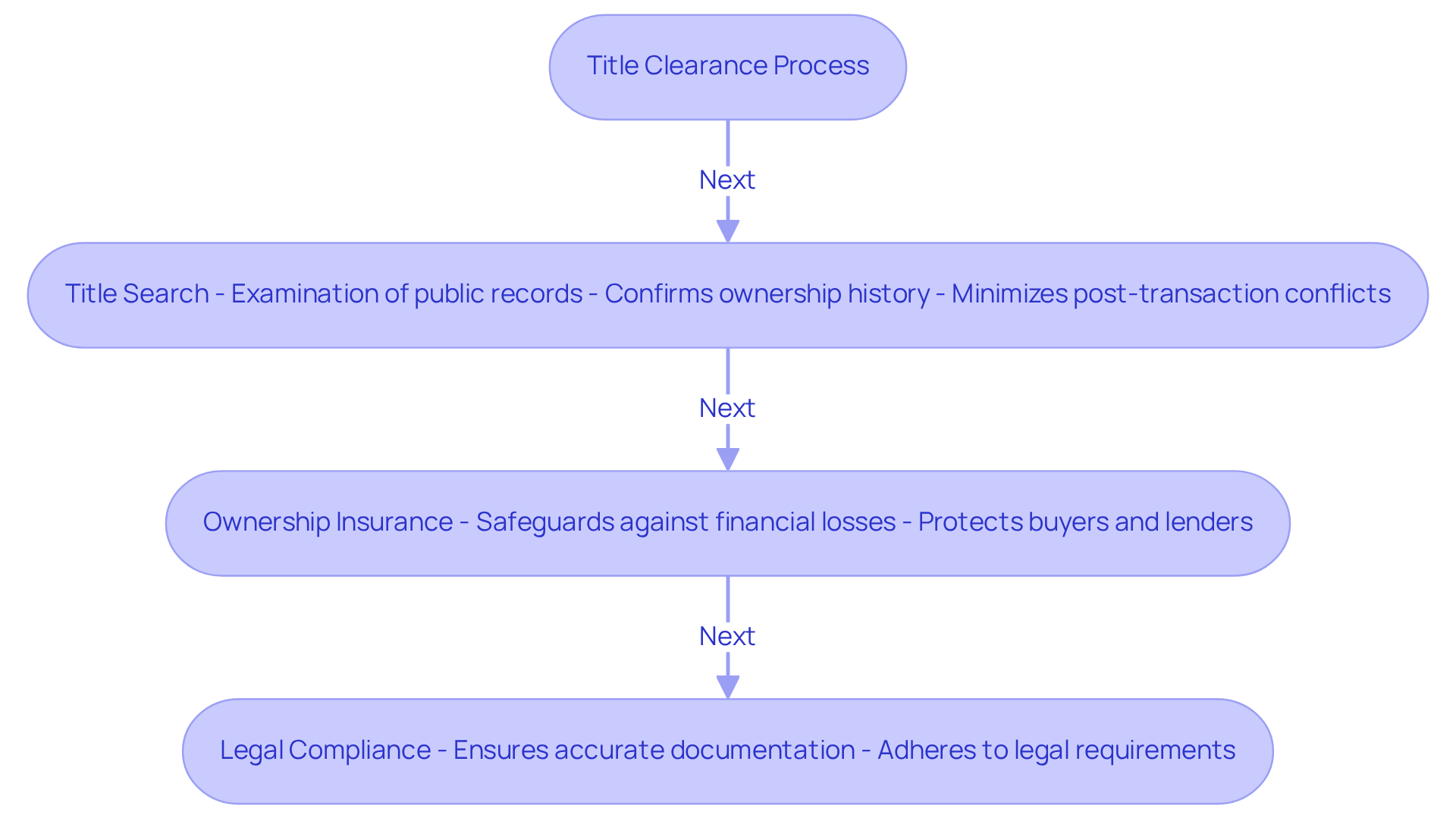
Identify Common Challenges in Title Research
Frequent obstacles in research significantly hinder the efficiency of the clearance procedure. One of the primary issues is incomplete records, where missing or outdated information can lead to . Title researchers often encounter , which can stall transactions and create uncertainty for both buyers and sellers.
Liens and encumbrances introduce another layer of complexity. Unresolved debts or claims against a property can , often necessitating extensive follow-up to resolve these issues. As one researcher aptly noted, 'Handling liens resembles maneuvering through a maze; each twist can result in unforeseen delays.' This underscores the .
Legal discrepancies also present . Contradictory information in public records can lead to uncertainty, requiring further investigation to clarify ownership and rights. By identifying these challenges, researchers can better prepare for and mitigate potential delays in how to . Furthermore, leveraging Parse AI's technology can , effectively addressing these issues and enhancing workflow productivity.
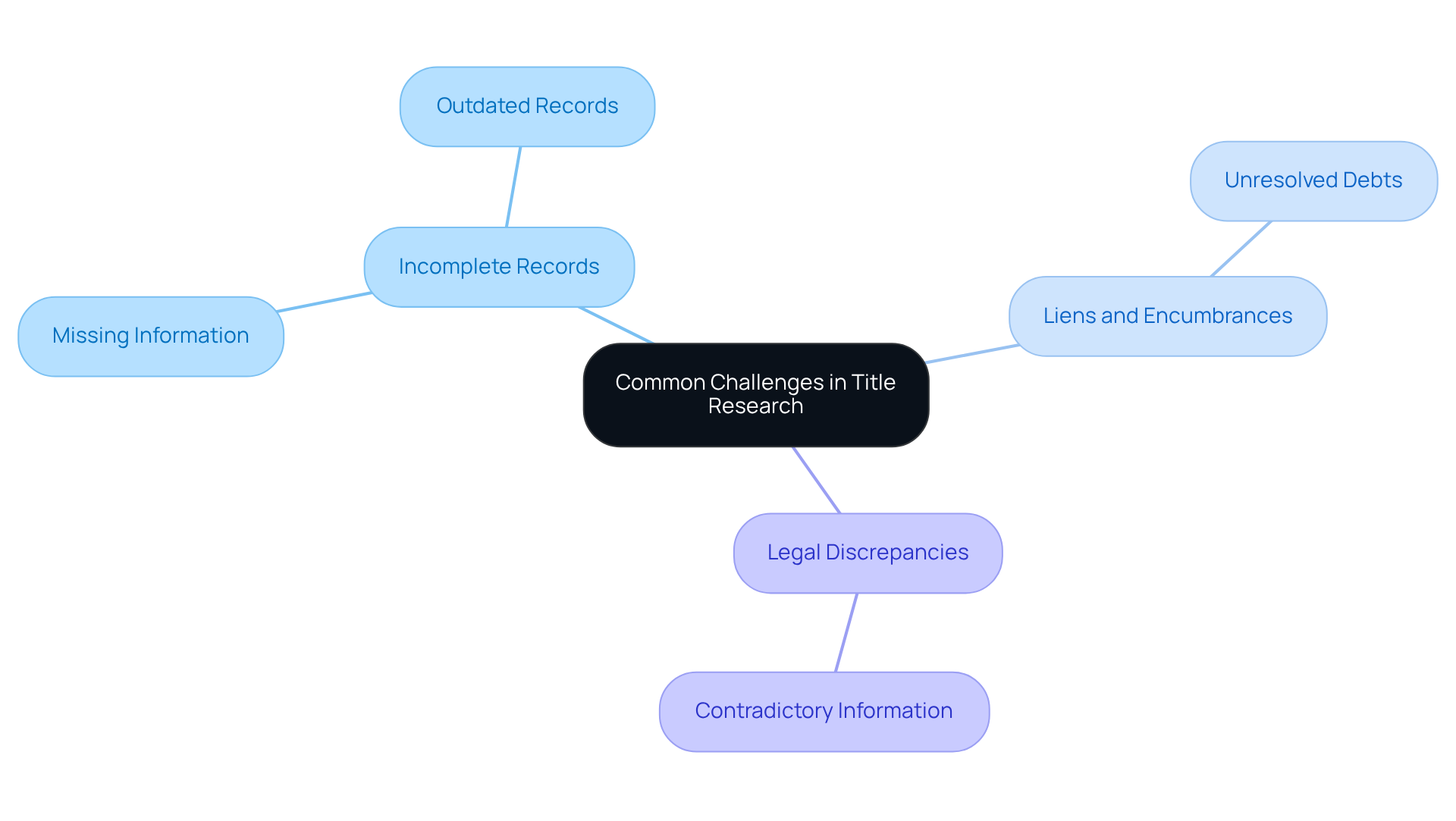
Implement Efficient Research Techniques
To enhance efficiency in , it is essential to employ :
- Standardize Processes: Establish a consistent methodology for conducting title searches, which minimizes errors and streamlines workflows.
- Utilize Checklists: Develop comprehensive checklists for each stage of the research process to ensure that no critical elements are overlooked.
- Prioritize Tasks: Concentrate on high-impact tasks first, such as addressing outstanding liens or discrepancies, to expedite the overall process.
By implementing these strategies, researchers can significantly boost their productivity and discover how to .
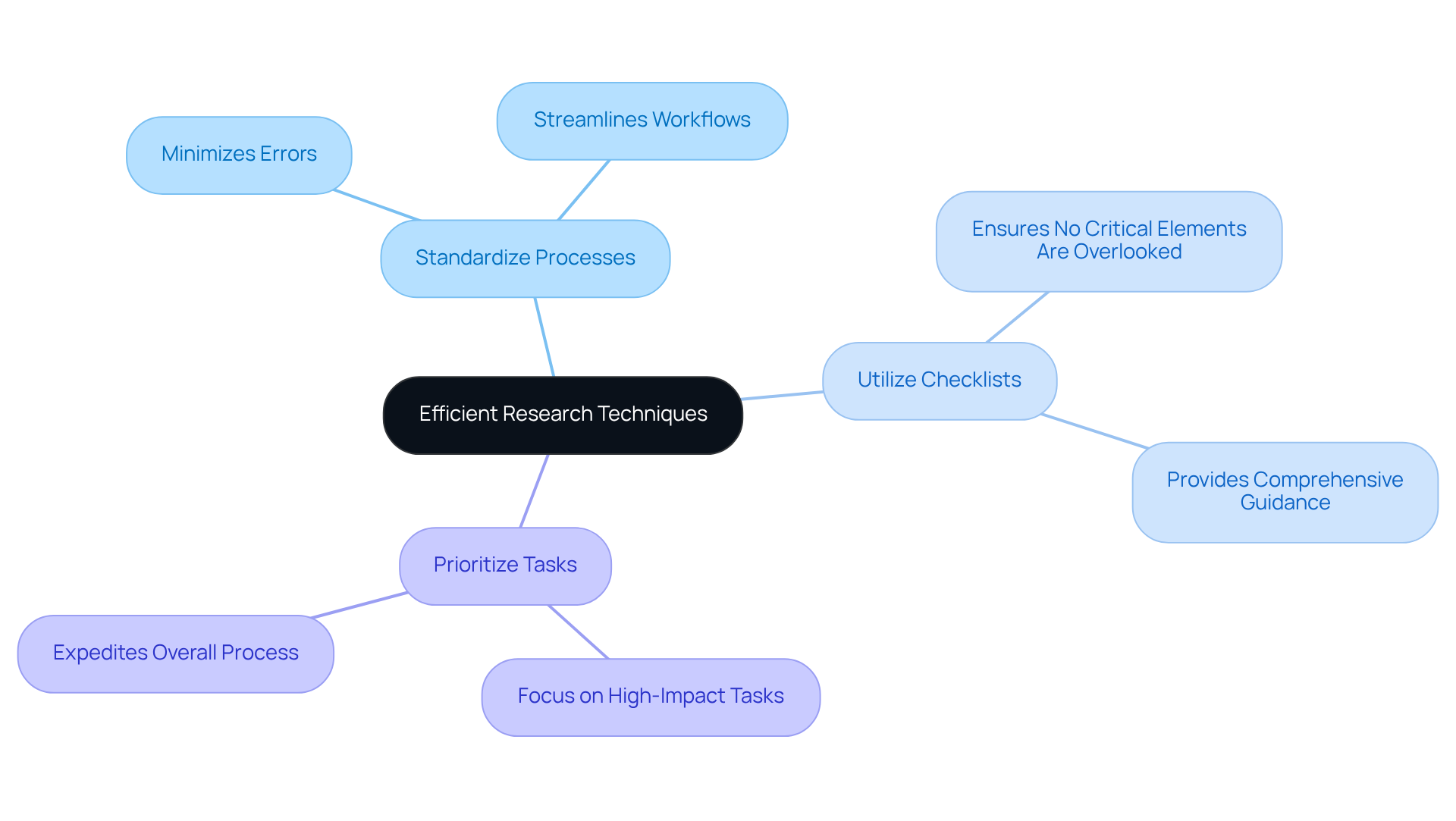
Utilize Advanced Technology for Document Processing
Incorporating is essential for understanding .
: This technology digitizes and extracts information from paper documents swiftly, significantly reducing manual data entry errors. By converting scanned documents into searchable and editable formats, OCR enhances document retrieval and compliance with regulatory requirements, leading to improved . Industry studies indicate that implementing OCR can reduce processing times by up to 80%, showcasing its effectiveness in streamlining operations.
: Utilizing machine learning facilitates the examination of patterns in data related to titles, allowing for faster detection of possible problems. This technology automates intricate processes, enhancing decision-making and expediting the research timeline. Statistics reveal that organizations employing machine learning report productivity increases of up to 97% and reduced errors in their operations.
File Management Systems: ensure efficient organization and tracking of files, facilitating easy access to necessary information. These systems improve cooperation and simplify workflows, ultimately providing insights on how to improve title clearance times. Features such as file indexing and automatic categorization greatly enhance usability, enabling users to swiftly locate pertinent files based on specific criteria.
By adopting these technologies, researchers in property ownership can significantly enhance their efficiency and precision in handling documents, leading to compared to conventional methods. For instance, to complete abstracts and reports more swiftly and accurately, illustrating the tangible advantages of integrating advanced technology into document analysis.
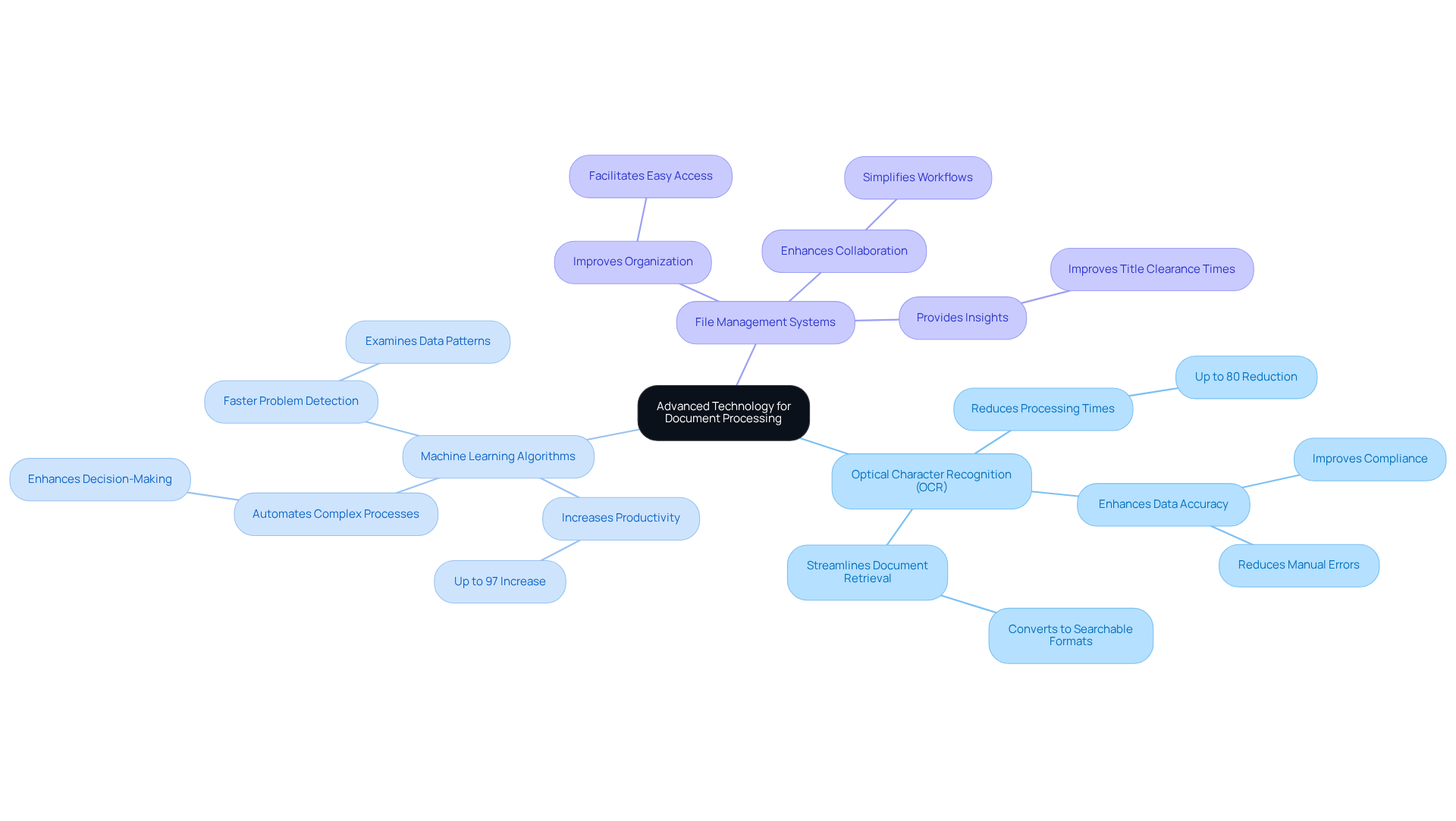
Ensure Accuracy and Compliance in Title Research
To maintain accuracy and compliance in title research, it is essential to adhere to the following guidelines:
- Double-Check Information: Always verify data against multiple sources to ensure its accuracy. With , you can streamline this process by utilizing that reads, labels, and extracts vital information from files, allowing for quick verification.
- Stay Updated on Legal Changes: Regularly review changes in property laws and regulations to ensure compliance. The can assist in this by providing , ensuring that you are always working with the latest information.
- Conduct Regular Training: Provide ongoing training for staff on best practices and legal requirements in property research. Leverage the interactive labeling feature of ParseAI, which allows users to create custom labels for data extraction, ensuring that your team is well-equipped to handle various document types effectively.
By prioritizing accuracy and compliance, and utilizing tools like ParseAI, title researchers can minimize risks and enhance the reliability of their findings.
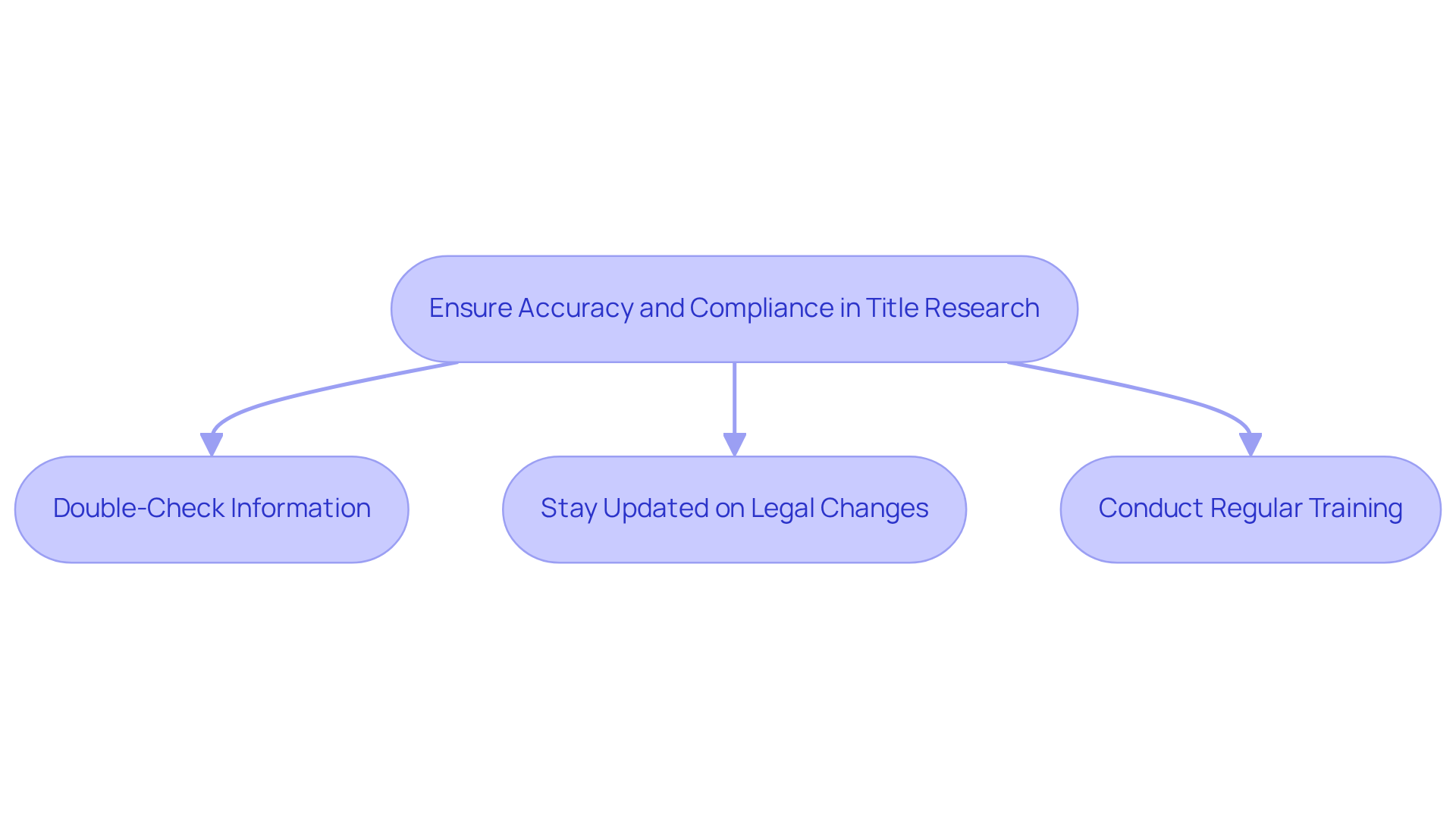
Conclusion
Improving title clearance times is essential for real estate professionals aiming to streamline property transactions and enhance client satisfaction. Understanding the intricacies of title clearance—particularly the importance of thorough title searches, ownership insurance, and legal compliance—enables professionals to significantly reduce delays and ensure a smoother transfer process.
Key insights emphasize the necessity of identifying common challenges, such as:
- Incomplete records
- Unresolved liens
- Legal discrepancies that can impede progress.
Implementing efficient research techniques, utilizing advanced technology like OCR and machine learning, and ensuring accuracy and compliance are crucial steps in overcoming these obstacles. By adopting these practices, title researchers can enhance productivity and significantly improve clearance times.
Ultimately, the integration of innovative solutions, such as those offered by Parse AI, showcases the transformative potential of technology in the title research process. A proactive approach to title clearance not only mitigates risks but also fosters a more efficient, reliable, and timely property transaction experience. Embracing these strategies is vital for real estate professionals committed to excellence in their field.
Frequently Asked Questions
What is title clearance and why is it important?
Title clearance is the process of verifying that a property deed is free of defects, liens, or encumbrances that could obstruct its transfer. It is important because it ensures a smoother transfer process and minimizes the risk of post-transaction conflicts.
What does a title search involve?
A title search involves a meticulous examination of public records to confirm the property's ownership history. It aims to reveal potential issues that may impact the transaction.
How does ownership insurance protect buyers and lenders?
Ownership insurance serves as a safeguard against financial losses stemming from flaws in ownership, providing peace of mind during property transactions for both buyers and lenders.
What legal compliance is necessary for successful ownership transfer?
Legal compliance involves ensuring that all documentation is accurate and that necessary disclosures are made. It is crucial for the successful transfer of ownership.
What common challenges are faced in title research?
Common challenges include incomplete records, which can cause delays, unresolved liens and encumbrances that complicate the clearance process, and legal discrepancies that lead to uncertainty in ownership.
How do liens complicate the title clearance process?
Liens introduce complexity by representing unresolved debts or claims against a property, often requiring extensive follow-up to resolve these issues, which can result in delays.
What role does technology play in improving title clearance times?
Leveraging innovative solutions like Parse AI can significantly improve the examination workflow, enhancing efficiency and effectiveness in document clearance, and addressing common challenges in title research.




